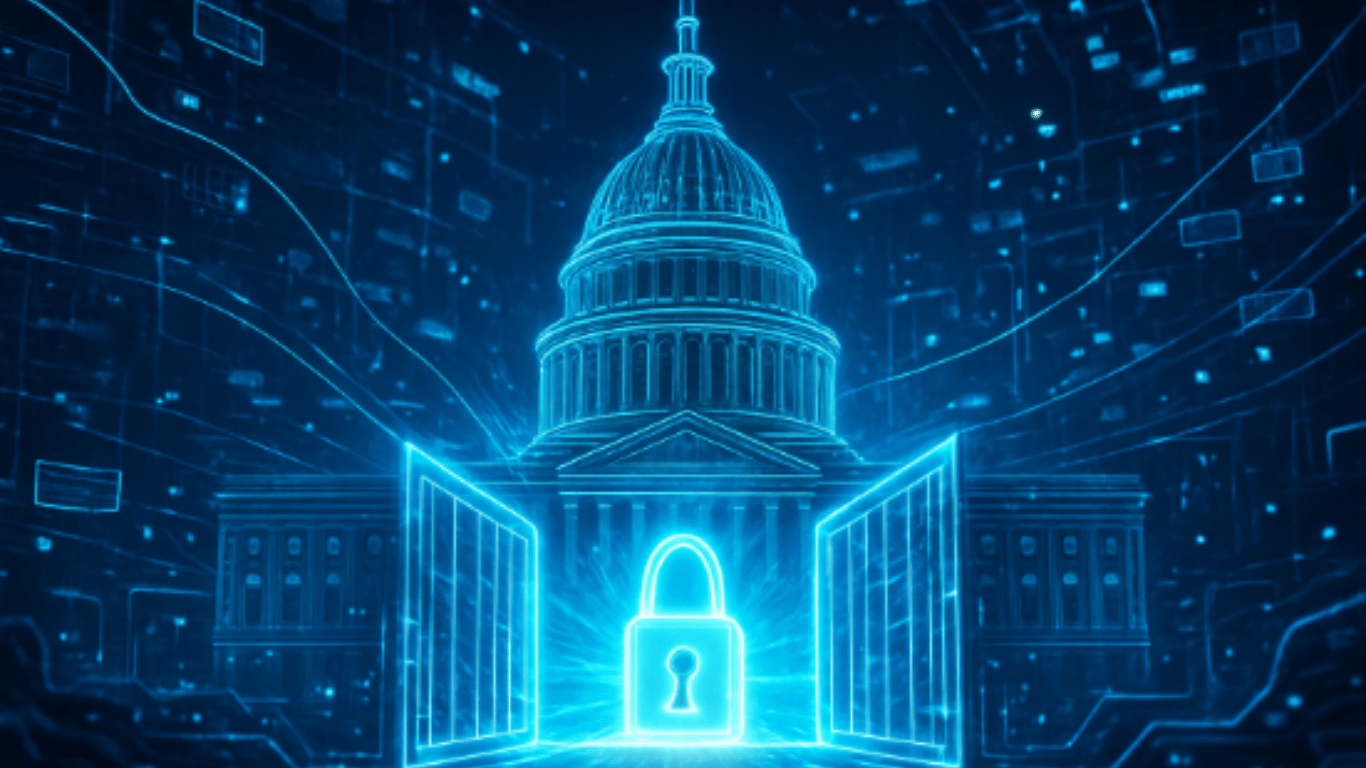Lissele Pratt is a fintech entrepreneur, investor, and speaker with over a decade of industry experience. As the founder of Capitalixe, a multi-million-dollar fintech advisory firm, she has spent the last 10 years helping high-risk sectors secure specialised banking and payment solutions.
Discover top fintech news and events!
Subscribe to FinTech Weekly's newsletter
Read by executives at JP Morgan, Coinbase, Blackrock, Klarna and more
For over a decade, the digital asset space has been one of the most exciting frontiers of innovation, as well as one of most uncertain.
Entrepreneurs have built groundbreaking technologies. Investors have poured in tons of capital. Developers have reimagined finance, ownership, even the internet itself.
But despite all of that momentum, one question has lingered: who’s in charge?
Recently, we took a meaningful step toward answering that question. The CLARITY Act, legislation aimed at finally defining regulatory boundaries in crypto, has advanced through both the House Financial Services and Agriculture Committees. While this may sound procedural, it’s a pivotal moment not just for the US, but for the global crypto ecosystem.
Let’s get into what the CLARITY act is, what it means for cryptocurrency, and why it still matters even if you’re not based in the USA.
What is the CLARITY Act?
Formally the Digital Asset Market Clarity Act of 2025, it’s a 236-page bill making its way through Congress.
It’s the first serious attempt to create a clear, national rulebook for crypto in the United States. The bill was introduced by Congressman French Hill and has rare support from both Republicans and Democrats, a sign that Washington knows this is long overdue.
At the heart of it, the CLARITY Act answers a simple but critical question: Who regulates what?
Right now, crypto firms in the US are stuck in limbo. Is your token a security or a commodity? Are you being regulated by the SEC or the CFTC, or both? The CLARITY Act changes that.
Instead of leaving things open to interpretation, it sets clear legal definitions for different types of digital assets. Based on those definitions, it assigns the right regulator. It brings structure. It brings consistency. And most importantly, it brings predictability.
For crypto to grow, trust and clarity aren’t optional. This Act could finally deliver both.
Practical Implications for Digital Asset Firms
What does all this mean for crypto businesses on the ground? Let’s break it down.
Jurisdiction over regulation and compliance
Right now, most platforms don’t know which rules to follow, or even who to answer to. That’s part of what’s been holding the industry back.
But with the CLARITY Act, instead of guessing, firms will be able to follow a clear, asset-based system. If your business is built around digital commodities (think Bitcoin or similar assets) you’ll register with the CFTC.
If you’re offering tokenized securities or investment contracts, anything that looks like a traditional investment, you’ll deal with the SEC.
And if you operate on both sides that’s okay too. The Act allows for that. You can register with both agencies, or pick one as your primary regulator, depending on where most of your activity happens.
It’s a flexible, dual-track system, but it does require one thing from businesses: Clarity.
You’ll need to take a hard look at your assets, your structure, and your use cases.
Because how you define your business is going to shape how you’re regulated.
And for the first time in a long time, that’s a good thing.
Better customer protection
When we talk about regulation, especially in crypto, it always comes back to one thing… Protecting people.
Under this bill, crypto platforms would finally be treated like what they really are: financial institutions. That means they’d need to follow the same anti-money laundering and know-your-customer rules as banks and brokerages.
It sends a clear message that, if you’re handling people’s money, digital or not, you need to play by the rules. That builds trust.
For many crypto firms, this means stepping up their compliance game. But it also opens doors: to institutional investment, to global partnerships, to real integration with the financial system
And importantly, the CLARITY Act doesn’t just copy-paste old rules onto new technology. It takes the time to understand crypto.
Take DeFi for example. The bill carves out smart exclusions, recognizing that not all decentralised platforms fit traditional models. Genuinely decentralised protocols and wallet providers won’t be lumped in with centralised exchanges. That’s progress.
Then there’s custody, a topic that’s caused a lot of confusion.
Right now, some regulators suggest that custody providers should hold customer assets on their own balance sheets. That’s risky and wrong.
The CLARITY Act fixes that by making it clear that customer funds belong to customers. Period.
This is what thoughtful regulation looks like. It protects users, respects innovation, and starts building the trust this industry needs to thrive.
Considerations of this Act
Of course, no legislation is perfect. And while this act has gained broad support, it’s also sparked some real concerns, especially from within the industry itself.
At the heart of the controversy is what some are calling a “Gensler-era” clause, which is a provision that critics say could actually reintroduce regulatory uncertainty, instead of eliminating it.
Specifically, the pushback focuses on two things:
- First, the bill’s removal of protections for previously issued tokens, tokens that companies launched in good faith, often under the assumption of different regulatory guidance.
- And second, the lack of clear limitations on SEC authority, which, according to some stakeholders, leaves the door open for continued enforcement ambiguity.
To many in the space, that feels like déjà vu. It echoes the same frustrations that surfaced around Ethereum, XRP, and other major projects, where definitions were vague, enforcement was reactive, and innovation was left in limbo.
And that reaction, this unease from builders, founders, investors, it highlights that regulatory clarity is only as strong as its definitions. If the lines aren’t sharp, if the scope isn’t precise, then we risk trading one kind of uncertainty for another.
Why a US Bill Matters Worldwide
So, why does a US crypto bill matter so much to the rest of the world?
Simple. The US is home to some of the biggest names in crypto, from exchanges to investors to infrastructure providers. When it moves, the entire industry feels it.
The US regulatory approach often sets the tone. It becomes a blueprint, or at the very least, a reference point, for other countries building their own crypto rules.
We’ve seen this before. When the US passed Dodd-Frank Reform after the 2008 crisis, the impact didn’t stop at US borders. Financial institutions from London to Singapore adapted to stay in the game.And it’s happening again, but this time, with crypto.
Of course, the US isn’t acting in isolation. In 2024, the EU introduced MiCA - a unified framework that brings all 27 member states under one regulatory umbrella. The UK’s Financial Conduct Authority, too, introduced strict rules, particularly on crypto marketing and firm registration.
The point is this, regulation is going global. And the US, with its weight, reach, and influence, plays a central role in shaping what that global future looks like. When it acts, others take notice, and often follow. Together, these all frameworks are shaping a new era of global crypto oversight.
Final Thoughts
The CLARITY Act is a big moment for crypto. And not just for the US. It matters for every company building in this space, no matter where you're based.
Because clear rules in the world’s biggest financial market shape the rules everywhere else. They raise the bar, set expectations, and create a path for other countries to follow. If your firm wants to serve US users, work with US investors, or list on US exchanges, you’ll need to understand and align with this framework.
But even beyond access, this is about direction.The CLARITY Act shows where the industry is going. Regulation is no longer a distant conversation, it’s happening now, in real terms, with real impact. And firms that act early will have an edge.
Now is the time to prepare:
- Know how your assets would be classified under US rules.
- Align your compliance practices with global AML and KYC standards.
- Think about your structure. Are you decentralized, custodial, or something in between?
But most importantly, ask yourself: if the US becomes your next market, are you ready?













